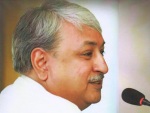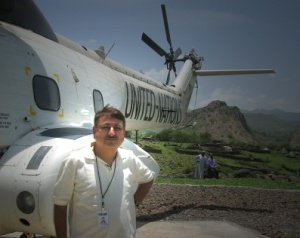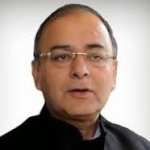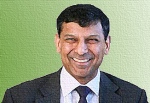Modi is right in reforming the bureaucracy!
Anoop Swarup

In contrast to the earlier regimes when the Administrative Reforms Commission Reports mostly gathered dust now all the State Governments have been asked to study the recommendations of the 2nd Administrative Reforms Commission including that of its 15th report that advocates abolition of the post of Divisional Commissioners to avoid red tapism and delays to realign these roles and also to review and monitor the reforms and their implementation. It is hoped that by reforming and streamlining the bureaucracy Modi will be a pathbreaker in both letter and spirit. The amendment by the Narendra Modi Government of the 46 year old All India Service Rules one may recall, included a 19 point guideline that was widely welcomed both by the bureaucracy and the fourth estate. Amongst other issues it had exhorted the much beleaguered relic of the Raj and the much hyped steel frame to maintain honesty, integrity and high ethical standards. More importantly it also mandated the bureaucracy to maintain political neutrality, make recommendations on merit alone and take decisions only in public interest. There has been a decline over the years on all these ideals of yesteryears. One may find it amazing that even in England not to speak of the US, Australia or for that matter the European Union, the Civil Service is mostly hired from professionals on contract with specific and well defined key performance indicators, targets and goals. It is ironical that the various services that do commit themselves to complete loyalty and unremitting zeal have failed to discharge themselves on any of the ideals set before them by the founding fathers of our country at the time of independence.
Let us briefly understand the past before we redefine the future . If we go back to history, the genesis of various services and the post of District Collector goes to 1786 when the East India Company made the Districts as the focal point of revenue administration and the following year vested them with magisterial powers with certain exceptions as the mainstay of their presence in British India. The bureaucracy in India and the various Services are much criticized now for corrupt practices in particular, and for apathy to the common man. The reason may not be far fetched as both the All India and Central Services even in the 21st century do follow the Cornwallis Code of 1793 at least in practice if not in spirit where distrust and class consciousness was distinctly promoted. Narendra Modi may well go down in the annals of history as the first Prime Minister of independent India to have taken the much needed decision to clip the wings of red tape and to reform this colonial vestige.
Let us examine some of the changes in the offing for the bureaucrats, particularly the work culture and on the ethics front. Semantics apart the former conduct rules for the babus of various services stated “All members shall at all times maintain absolute integrity and devotion to duty and shall do nothing which is unbecoming of a member of the Service.” I at the cost of repetition would like to restate what is already there but as it always happens is that it is lost sight of and have no doubt that many of the babus are blissfully unaware of its letter and spirit. Perhaps it will do well for the country if both the federal and state governments have these rules prominently displayed both at the entrance to the Secretariats and the Ministers’ offices for the public and the common man they are appointed to serve that it be known that it is incumbent on them to: “Maintain principles of merit, fairness and impartiality while discharging duties; Maintain accountability and transparency, responsiveness to the public — particularly to the weaker sections; Maintain courtesy and good behavior with the public; Maintain discipline in discharge of duties; Be liable in implementing the lawful orders duly communicated to them; Maintain confidentiality in the performance of duties as required by law, particularly with regard to information, disclosure of which will prejudicially affect the sovereignty and integrity of India, strategic, scientific or economic interests of the nation or friendly relations with foreign countries; Commit themselves to the Constitution and uphold its supremacy and democratic values; defend and uphold the sovereignty and integrity of India, the security of the state, public order, decency and morality; Take decisions solely in public interest and use or cause to use public resources efficiently, effectively and economically; Maintain high ethical standards, integrity and honesty; Maintain accountability and transparency; Promote the principles of merit, fairness and impartiality while discharging duties; Make choices, take decisions and make recommendations on merit alone; Not misuse position and not take decisions in order to derive financial or material benefits; Not place themselves under any financial or other obligations to any individual or organization which may influence them in the performance of their official duties; Refrain from doing anything which is or may be contrary to any law, rules, regulations and established practices; Declare any private interests relating to their public duties and take steps to resolve any conflicts in a way that protects the public interest; Perform and discharge duties with the highest degree of professionalism and dedication to the best of their abilities; Act with fairness and impartiality and don’t discriminate against anyone, particularly the poor and the under-privileged; Ensure courtesy and good behavior with the public, display responsiveness to the public, particularly to the weaker section.”
Let me now briefly delve into other factors and particularly what really ails our bureaucracy. Attempts made in the past to reform the bureaucracy have only been either cosmetic or a lip service to appease the stray voice both within and outside the corridors of power. I recall the Vora Commission set up with much fanfare, to which I had the occasion to informally contribute much to though informally, almost two decades ago on bureaucrat politician nexus and on eradicating corruption, that is now gathering dust in the North Block. No wonder that the services though once regarded as the steel frame were programmed during the raj to function on distrust of the masses and to provide an insulation against any revolt or unrest became not only self-preserving and self-aggrandizing by their very instincts but also through active connivance of vested interests. These vested interests have over the years not only focussed on centralizing the power function but along with it the planning process. This has been the most unfortunate reason over the years for very poor participation of the masses in their own growth story when virtually every country both in the developed and the developing world were scripting a success story of sorts. This damning indictment of the various Services was well orchestrated by none other the then Cabinet Secretary Nirmal Mukarji who in his key note at the 50th anniversary of the Service made a very pertinent point that the Indian Administrative Service should ‘move from a command and control strategy to a more interactive, interdependent system’ that should give way to local state and central bureaucracies as an aid to better accountability, involvement and efficiency.
It need not be overemphasized that the countries and the city councils in the west being more participatory have ensured not only better delivery but have made the democratic process a real success at the grassroots. There is thus now a very strong case as Modi plans his strategy for good governance that we abolish these services in favor of federalism. The local representation that will hire the best professionals locally will fortify the existing Panchayats, Municipal Bodies, Corporations and the local self governments with its own brand of good governance that suits the needs, aspirations, language, culture and traditions of the people. Also for sure they will be more responsive instead of simply carrying forward the legacy of the Raj and the ‘Lal Batti’ culture and a good antidote to any form of corruption or nepotism as they will be locally hired and directly answerable to the people.
No doubt that the professionals who are hired both at the national and local levels on contract will deliver on strict time frames. It is now reliably learnt that Prime Minister Modi may redefine the role of District Collector/ Deputy Commissioner, again a vestige of the past for a more development oriented and more professional body that will be forward looking in keeping with his reforms agenda. There is now a realization though belated that the Deputy Commissioner or the Deputy Commissioner will contribute more to his existing core functions such as land and revenue, excise and treasury management as also coordination and general administration, the developmental roles may be better handled by a more professional body such as those of disaster management, public distribution and civil supplies, elections, transport, census and developmental projects whereas law and order may be left to the Police where the prevailing metropolitan commissionerate model may be redefined.
With administrative reforms now on cards, administration should be closer to the citizens and the “minimum government and maximum governance” mantra of Modi should be a dream come true.




